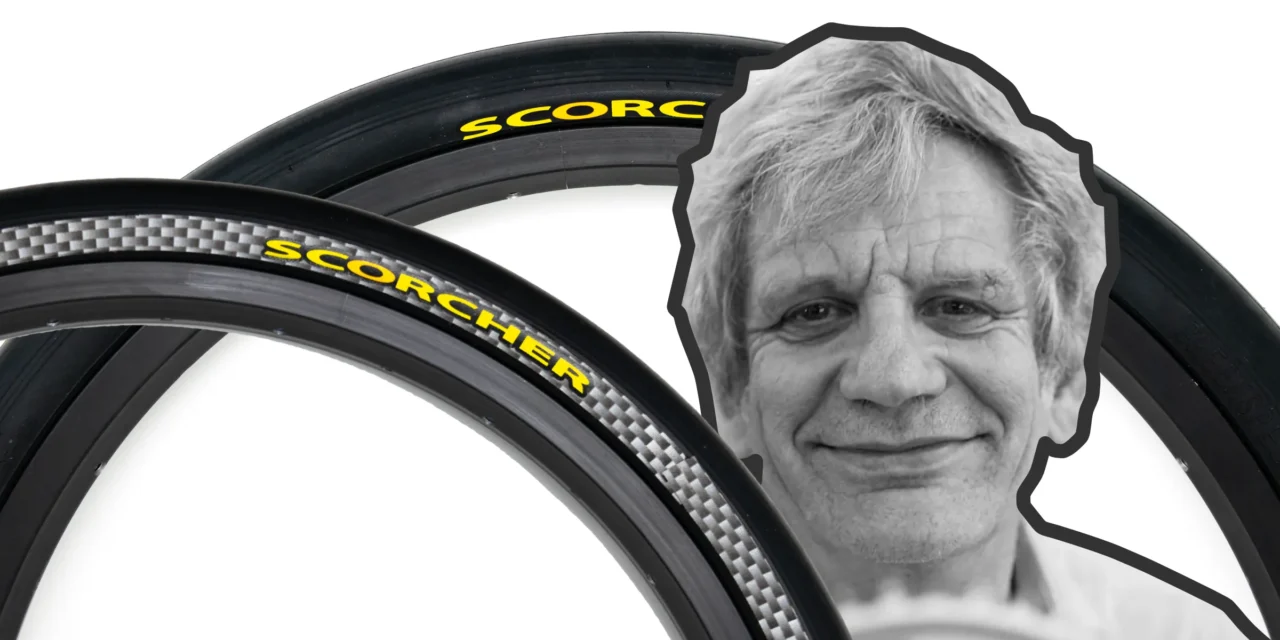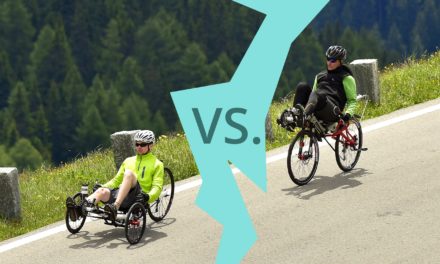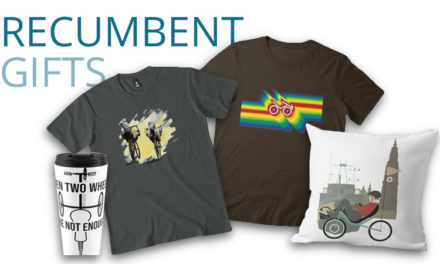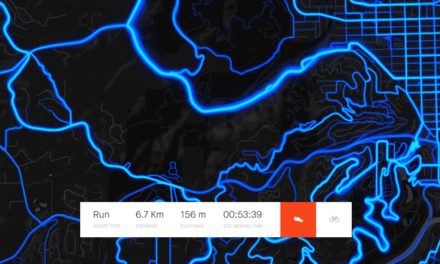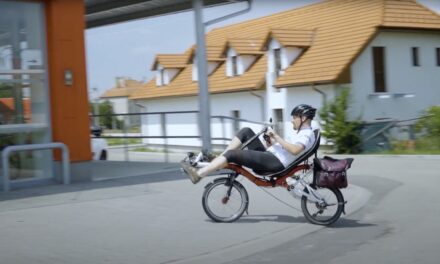Tyre size marking is one big jungle of numbers, brackets and “x’s” that are hard for a cycling novice to understand. So if you want to get a bit more insight into what all those markings on the side of your tyre mean, you might find it useful to read an article written many years ago by Ian Sims. Although old, it is still valid. Ian Sims, founder of the Greenspeed and a man who can easily be considered a pioneer of modern trikes, was also the designer of certain components, including the rims and tyres.
His tireless testing of every component and detail was impressive and his knowledge of the design of any wheeled vehicle was astonishing. Ian sadly passed away in 2019 and so this article is a little throwback to a time when he could still share his knowledge in person or via social media.
Original text:
In every tyre size there are two sizes. What could be called a road size and a MTB size, or a thin size and a fat size.
For instance in 20″ there is 20 x 1.5″ and 20 x 1 1/2″, which are quite different!
The reason for this is quite simple. Bicycle tyres are measured on the outside diameter, rather than the rim diameter like car or motorcycle tyres. Thus if the rims were the same, there would be too a big difference in the overall diameter between a fat tyre and thin tyre.
Thus in every inch size of bicycle tyre there are two rim diameters, one for thin (Road) tyres and one for fat (MTB). This rim size is what is known as the Bead Seat Diameter or bsd. This is always expressed in millimeters to give a more accurate measurement, as it should be within one millimeter!
So in 20″ we have 406 mm for the Fatties, and 451 mm for the Roadies. Thus a common 20″ size is 20″ x 1.75″ or 47-406 Note that the 47-406 marking is the ETRO or European standard of marking, in which you cannot go wrong. This dictates that the Road tyres should use fractional sizes and the MTB tyres should use decimal sizes, e.g. 20 x 1.75 (47-406) and 20 x 1 3/8″ (37-451), so the best thing to do is to use the European size, 47-406 or 37-451.
In 16 inch size, the tyre size used on the GTs, there are again two sizes. These are the Road size, which has a Bead Seat Diameter of 349 mm, and the BMX or rather child bike size of 305 mm.
The most popular child bike 16″ size is 16″ x 1.75″ or 47-305. Unfortunately many tyre manufacturers making tyres for children’s bikes make them as cheap as possible and can’t be bothered putting the ETRO size on them, thus the confusion!
I have used the “Road” 16″ size for my trikes, as it is a larger rim size than the child’s bike size with a Bead Seat Diameter of 349 mm. The most popular size in this rim diameter, used by a number of recumbent bikes, is 16″ x 1 3/8″ or 37-349. These will fit the GTs, and they are what I used to start with, and are still made by Schwalbe.
However I discovered that, contrary to popular opinion, the fatter tyres rolled easier than the thin tyres, so I made a new tyre size, 16″ x 1 1/2″ or 40-349 plus I made a number of other improvements based on testing a great number of different tyres. Thus the Scorcher tyres were born, which have lower rolling resistance than any other tyre on the market, plus a better ride.
The only down side it they puncture rather easily so I introduced a Kevlar belt into the tyre, and also put the reflective strips on the side walls. The rolling resistance is not quite as good, but the puncture resistance is better.
If I am going on a long trip, I always take a spare tyre, just in case I am unfortunate enough to get a bad cut in a tyre I cannot fix.
Since you would find this original article deep in the history of the Greenspeed Facebook page, we asked Marshall Randal, sales and marketing manager at WizWheelz, the American company that now owns the Greenspeed brand, for approval to re-post it. Marshall holds several world trike records and uses Scorcher tires on his Greenspeed Aero trike. Here is what he added to the whole subject:
“I do miss what Ian brought to the recumbent community, he is surely missed! As you know I love the Scorchers, I have thousands of miles on them, and have only experienced one flat. That said, I am extremely careful and mindful of matching tire pressure to where I am riding, and make sure to not ride through debris on the road and trails that might contain small sharp objects, kind of like when I road on expensive road bike tubular/sewup tires, we all hopped over the crap in the road to protect our $100.00 dollar tires.
I would also like to mention that some of the tires mentioned may no longer be in “current production”, though some may still be available at retailers and from GreenSpeed i.e. the Kevlar belted tires and those with a reflective side wall are no longer in production but we still have some in inventory.”
You can find some Scorcher tyres in the Greenspeed’s accessory internet shop..
If you want to understand more about the topic of tyres for recumbents and trikes, you can read two more articles on RECUMBENT.news, such as::
Recumbent wheelsize overview
The most reliable 20″ tires
(from 2021)
With French standard coming into play in the sizing of road bike wheels, which are often used on fast recumbents today, if you want to get a really good understanding of all those markings, we strongly recommend heading to the legendary SheldonBrown.com Tyre Sizing System page.

